The Royal Exchange will forever be associated with Sir Thomas Gresham (1519-1579). Here he is, portrayed as a confident young man in his mid-twenties:
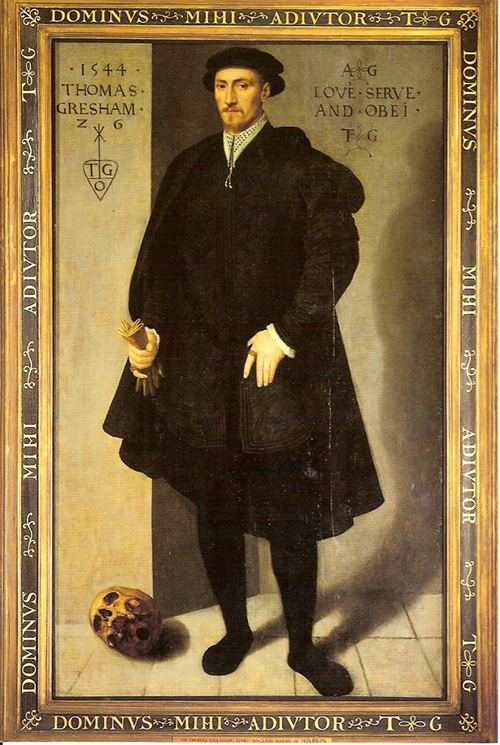
Portrait – Gresham College.
Apprenticed for seven years in the Mercer trade, he spent much of his time on the continent, learning French and Flemish in the process. His astuteness with finance came to the attention of Thomas Cromwell who started putting royal work his way, and Gresham’s connection with royalty continued under Elizabeth I. As well as managing his family’s trading interests (primarily clothing, guns and ammunition) as a royal agent he was charged with reducing the royal debt held by Antwerp merchants. When he took over this task the debt stood at £250,000 but by 1565, applying a combination of shrewd trading and interest rate speculation, he had reduced it to only £20,000 (earning himself a knighthood). These skills increased his own wealth considerably as well, and this was further enhanced on the death of his father.
By the late 1560s he was reputed to be the richest commoner in the country. Having no heir (his only son died in 1564), in his later years he used some of his vast wealth to produce two lasting legacies – Gresham College and the first Royal Exchange. The College was established at his house in Bishopsgate where lectures were given on a wide range of subjects including astronomy, geography, medicine and music. The College still offers lectures today at its Holborn premises. The Royal Exchange, based on the Antwerp model, was his gift to the City’s merchant negotiators who up to that time ‘had done their business in the wind and weather of the public street’.
Queen Elizabeth formally opened the Exchange on 23 January 1571, giving the building its Royal title along with a licence to sell alcohol. The building was lost in the Great Fire of 1666 and its successor also burned down in 1838. The third building which stands today was opened in 1844 with much ceremony by Queen Victoria herself, Prince Albert having laid the foundation stone two years earlier.
In this blog I will be looking at some of the features of the present building that perpetuate Gresham’s memory and I will deal with other aspects in a later blog.
Let’s start with the main gates that face Bank junction …
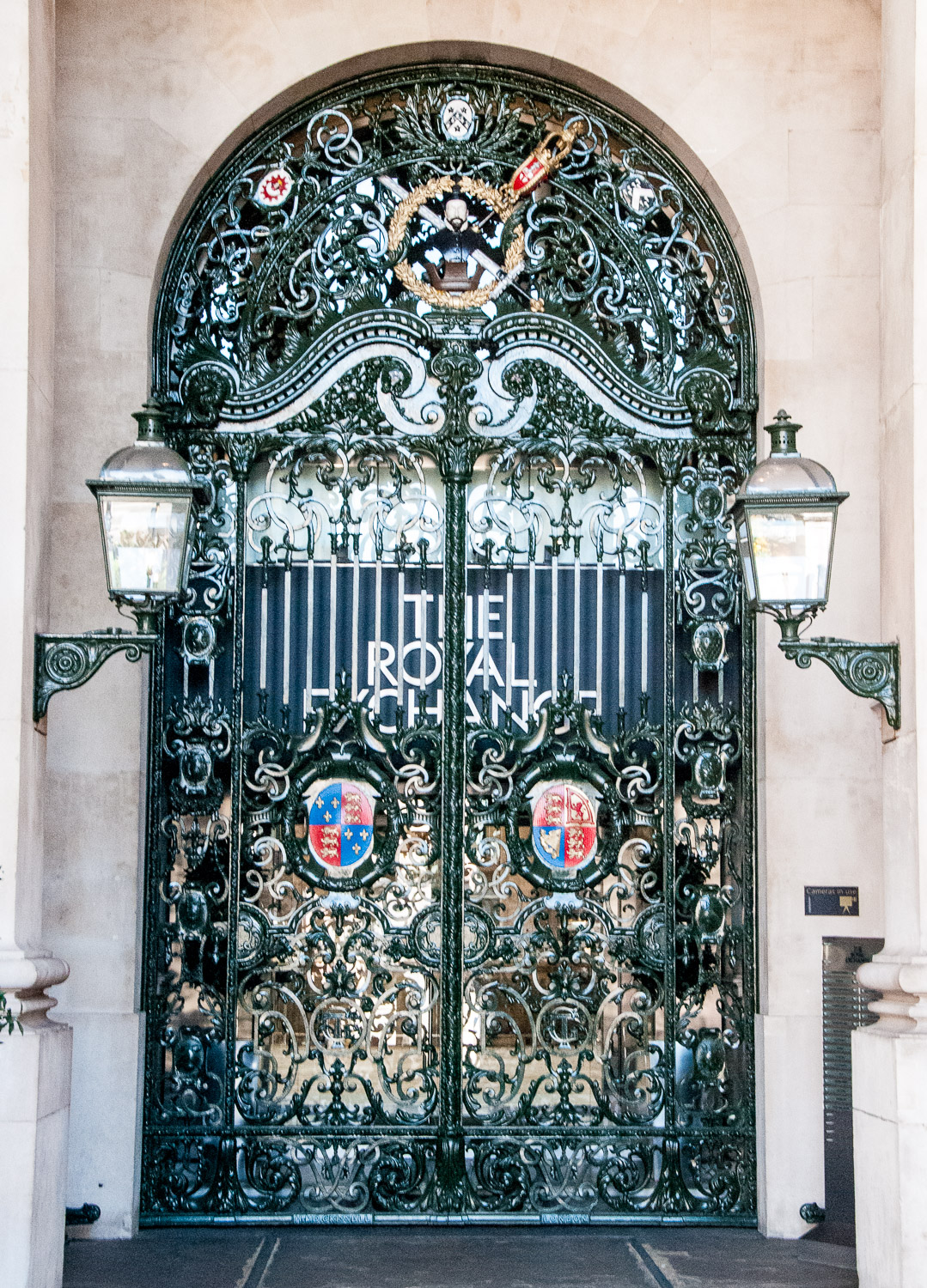
Best observed when closed, they incorporate an image of the great man himself. Above his head are the arms of Gresham College with the sword and mace representing the City …
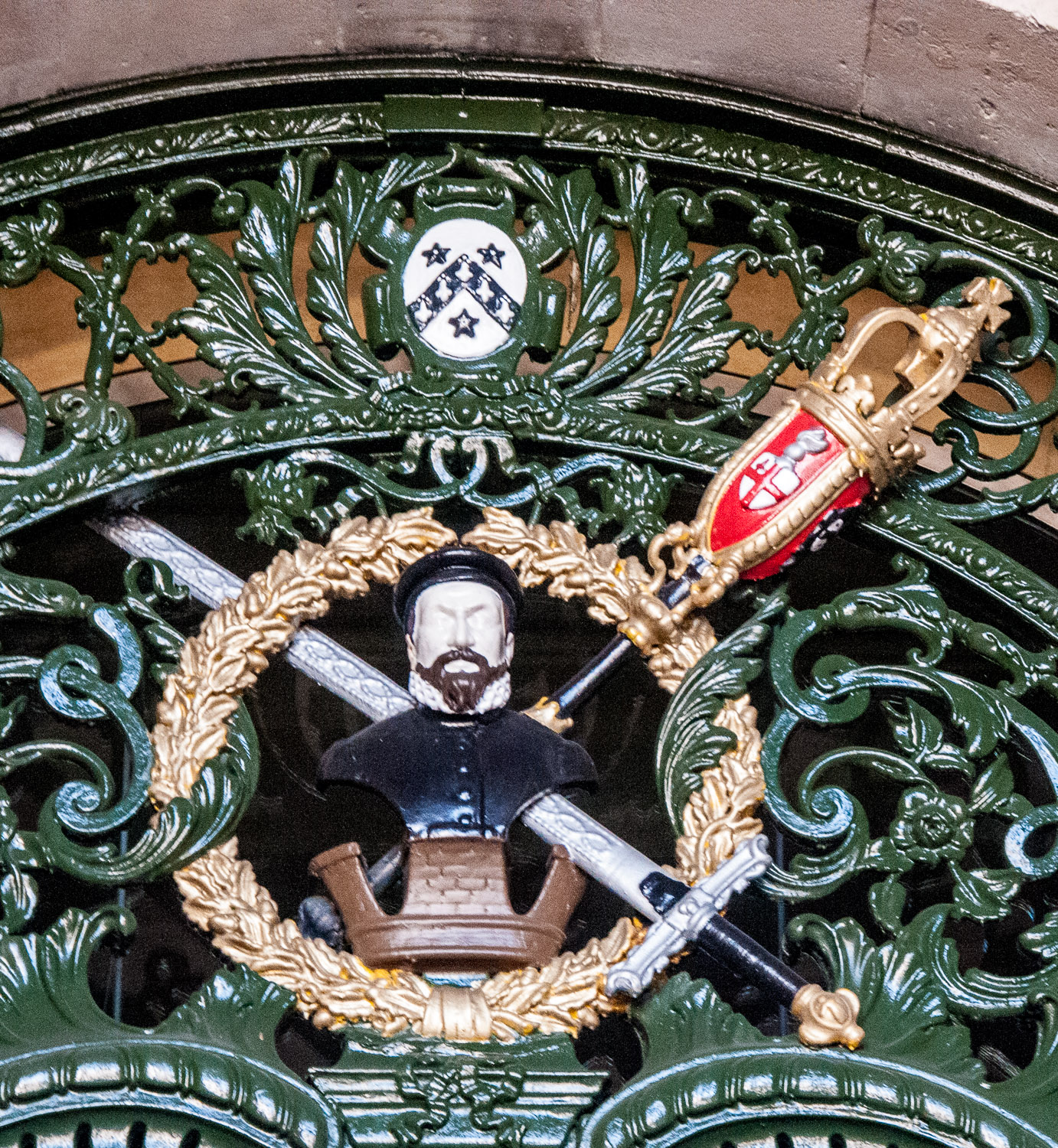
The gates were supplied by the firm of H. and M.D. Grissell whose foundry also produced the railings for Buckingham Palace and the British Museum. Henry Grissell (nicknamed ‘Iron Henry’) was famous not only for the quality of his work but also his attention to detail, evident here in the entrance to the Exchange in Threadneedle Street …
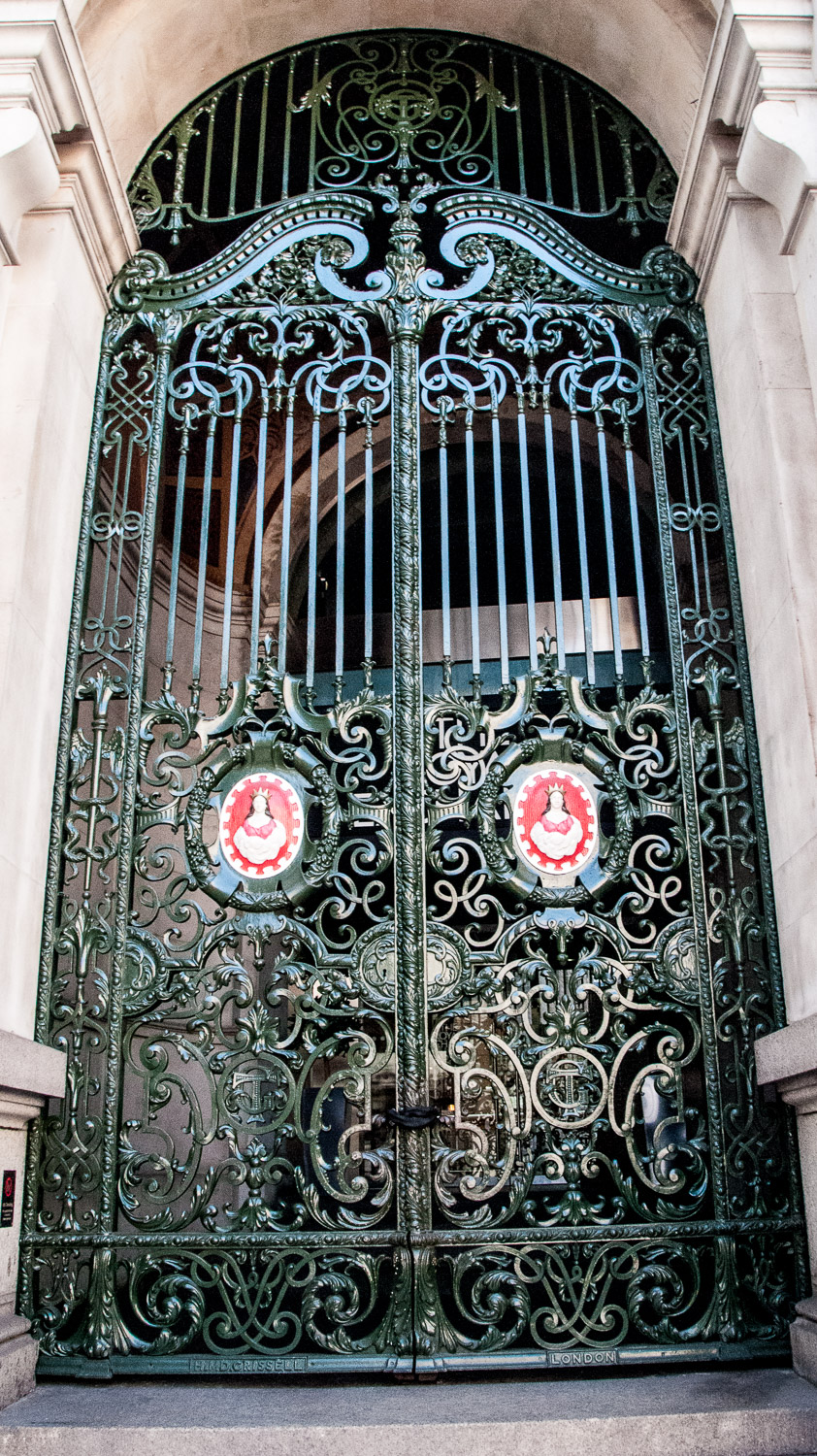
If you look closely you will see that the ironwork incorporates Gresham’s initials:
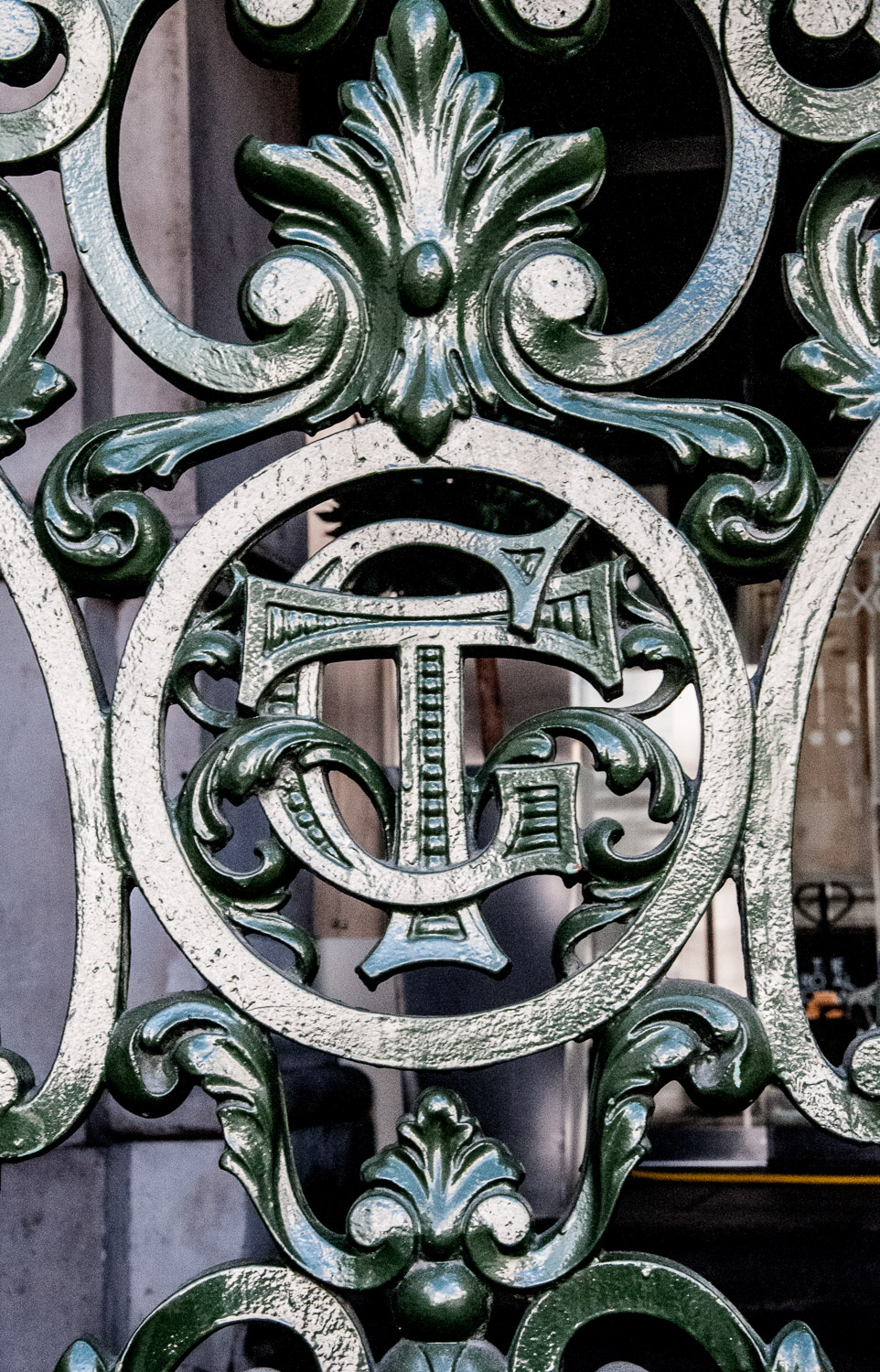
Along with a Mercer Maiden …
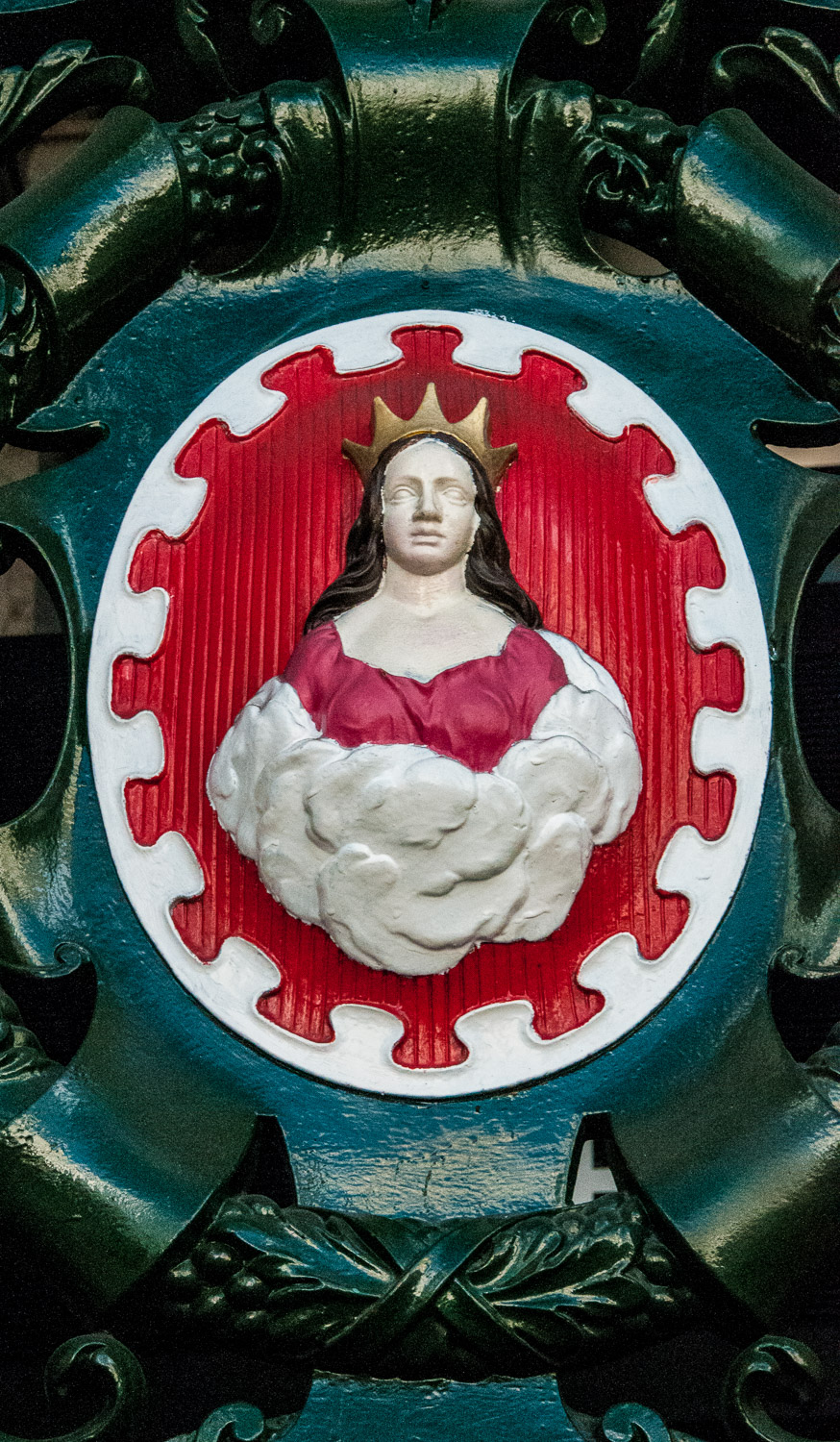
I have written about the Maidens in more detail in an earlier blog and their use as a symbol denoting property owned by the Worshipful Company of Mercers of which Gresham was a member. They still own the land on which the Exchange stands.
Look up at the Exchange and you will see several grasshoppers, the symbol of the Gresham family …
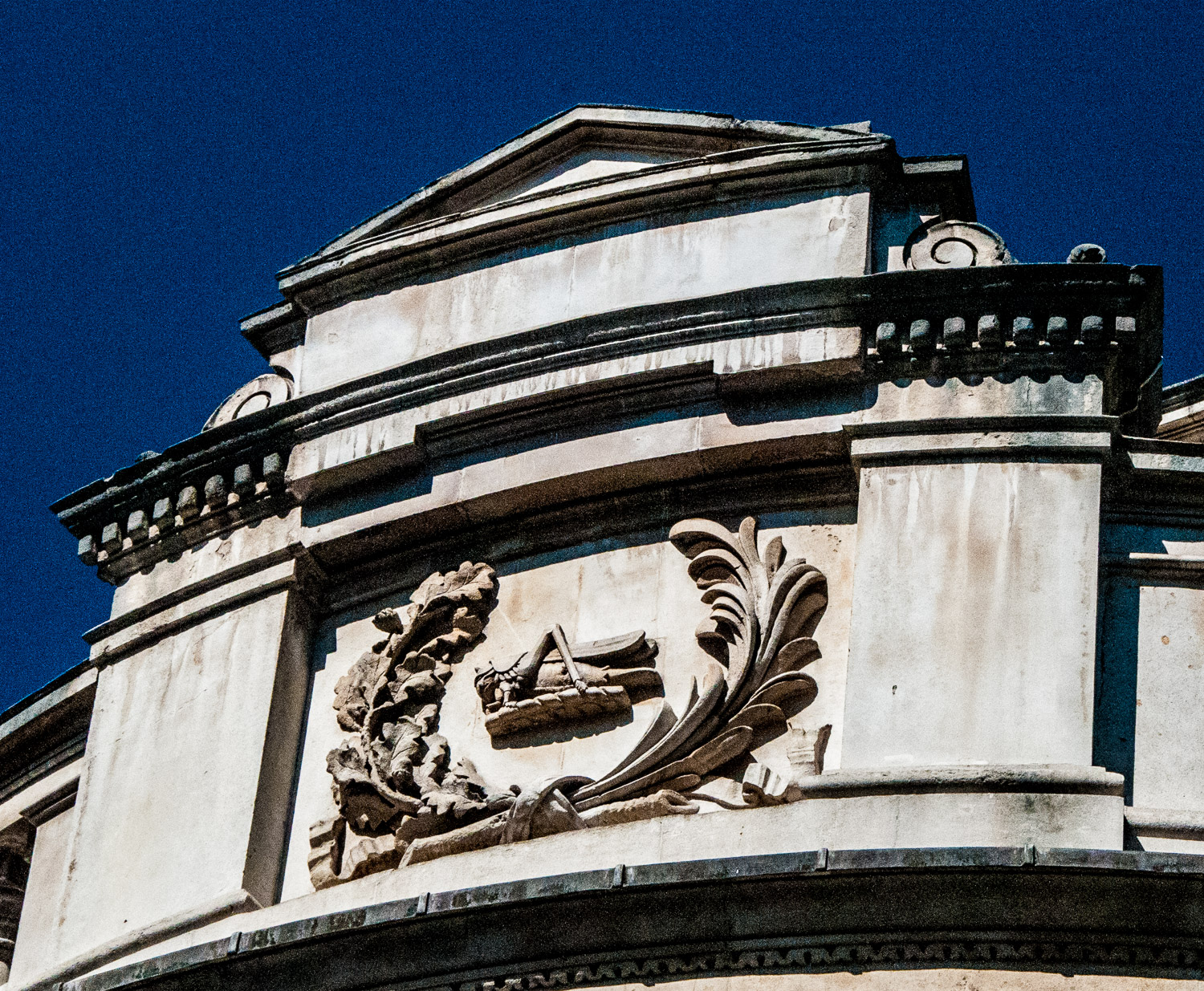
Facing Threadneedle Street.
And the weathervane on the roof, which was saved from the fire that destroyed the second Exchange in 1838 …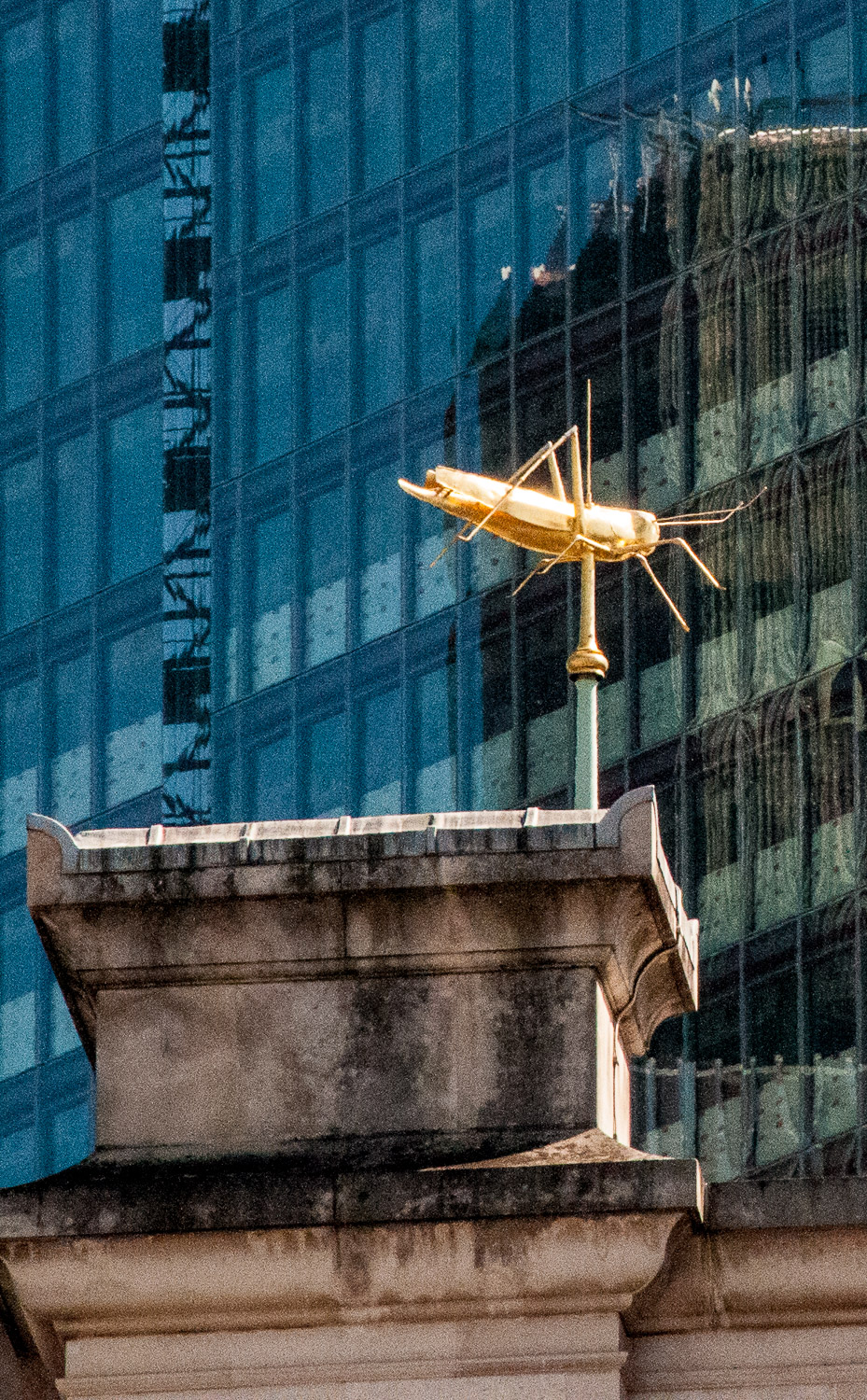
The story goes that one of Thomas’s ancestors, Roger de Gresham, was abandoned as an infant in the marshlands of Norfolk and would have perished had not a passing woman been attracted to the child by a chirruping grasshopper. Heraldic spoilsports assert that it is more likely a ‘canting heraldic crest’ playing on the sound ‘grassh’ and ‘gresh’.
There is, course, also a statue of Gresham himself on the building but it is so high up you can only view it from practically underneath …
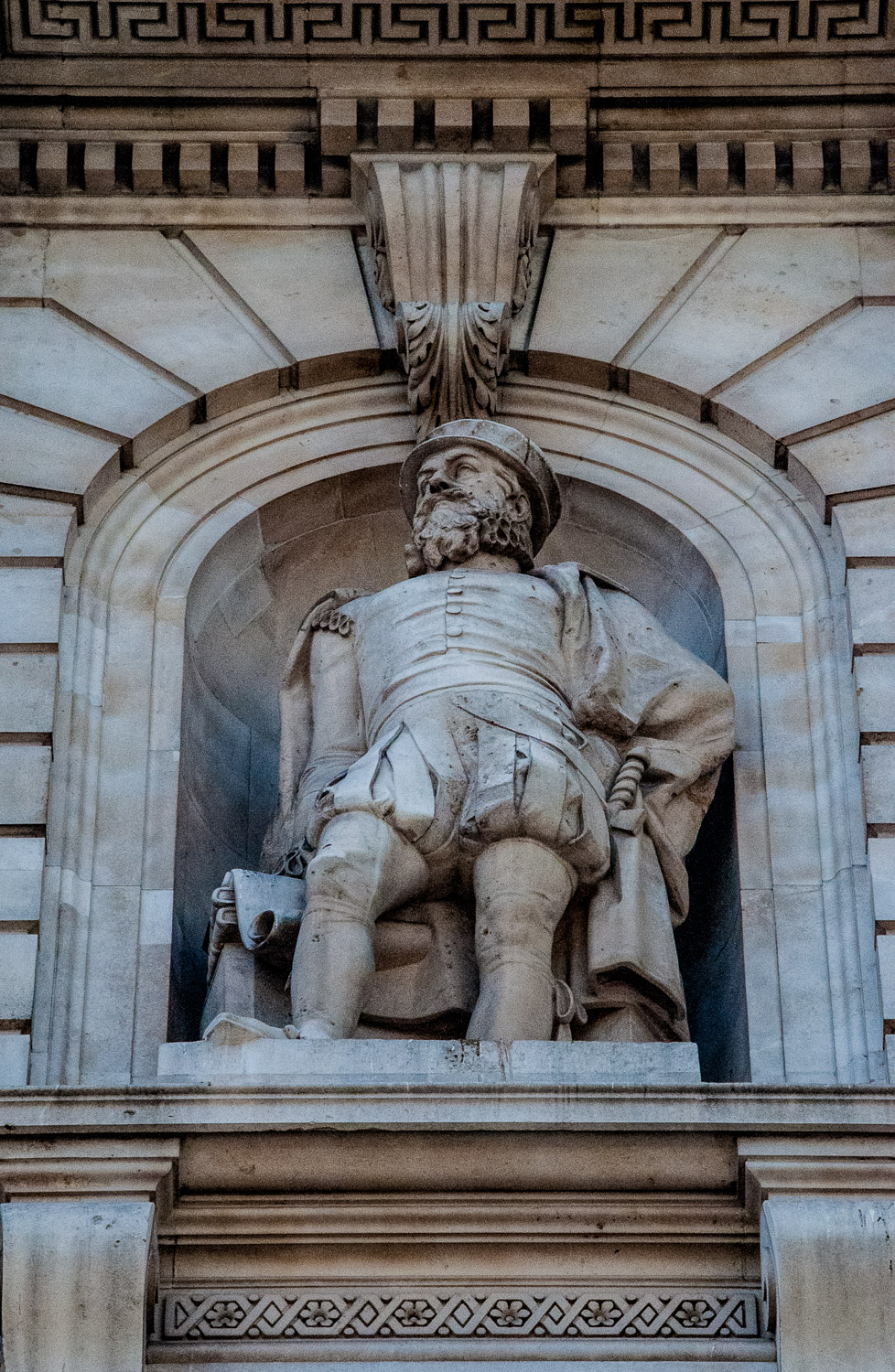
The ‘Ornamental Passions’ website tells us the following about the sculptor William Behnes. He was, apparently …
… a half-English Irish-educated artist whose financial profligacy had reduced him to penury. He was declared bankrupt half way through the commission but he successfully completed it and was paid £550 (roughly £50,000 today).
Incidentally, the Exchange was lucky to survive the wartime bombing especially when, on 11 January 1941, a direct hit on Bank Station killed 111 people. These pictures show the aftermath then and the view today …
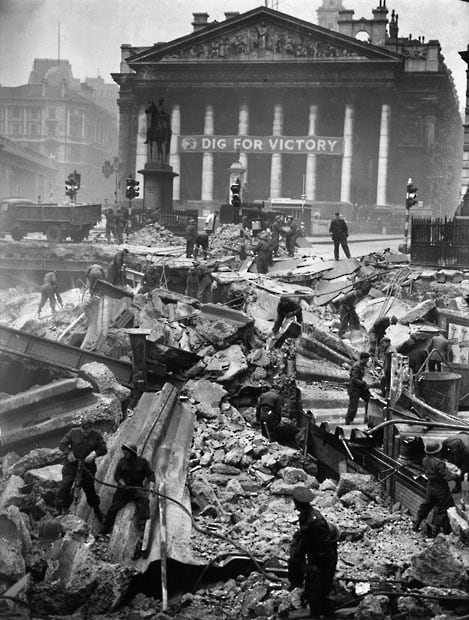
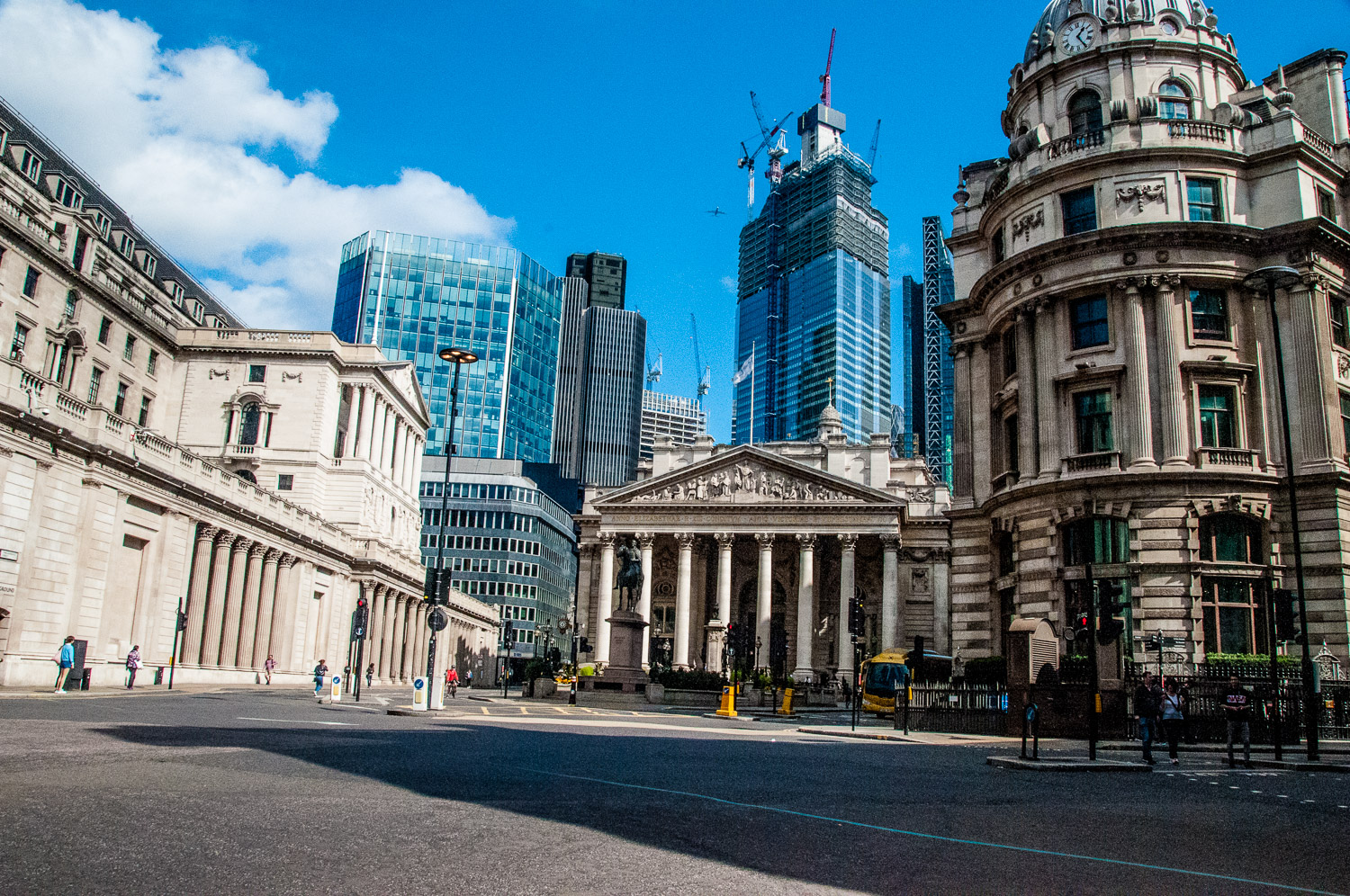
The view at Bank on a quiet Sunday.
